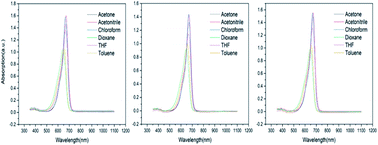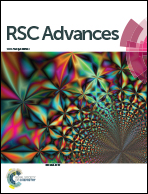Construction of a simple crosslinking system and its influence on the poling efficiency and oriental stability of organic electro-optic materials
Abstract
A new fluorinated polycarbonate was synthesized by solution polymerization of bisphenol AF, anthracen-9-ylmethyl-4,4-bis(4-hydroxyphenyl)pentanoate with triphosgene. This new polycarbonate was used as a host polymer. A traditional chromophore with a D–π–A structure was modified by bisphenol A acrylate affording chromophore A. The large modified group can not only effectively avoid the dipole interaction between chromophores, but also endow the chromophores with the properties of attaching and crosslinking with a host polymer through in situ Diels–Alder “click chemistry” reactions. Such properties can improve both the poling efficiency and the thermal stability of organic electro-optic (EO) polymers. The thermodynamic properties of the crosslinking system showed that the glass transition temperature rose with the increase of the chromophore content. The EO polymer showed a large EO coefficient of about 78.9 pm V−1 at a wavelength of 1310 nm and an excellent long-term stability of about 89% with respect to its initial value and it can be kept after 300 h of heating at 80 °C.



 Please wait while we load your content...
Please wait while we load your content...